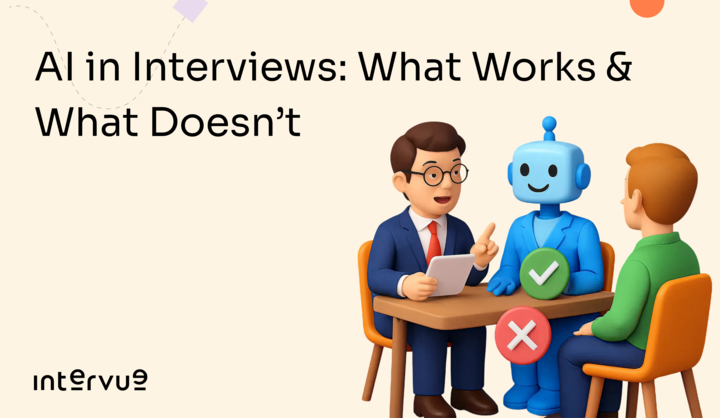Talent Operations: The Backbone of Scalable Hiring

What is Talent Operations?
Talent operations are the strategic function that optimizes, streamlines, and scales the hiring and talent management processes within an organization. It bridges the gap between recruiting, human resources (HR), and business objectives, ensuring that companies attract, hire, and retain top talent efficiently.
Talent operations is not just about filling open roles; it involves leveraging technology, data, and streamlined processes to create a seamless hiring experience for both candidates and recruiters. It ensures that recruiting strategies align with business goals, reduces inefficiencies, and enhances collaboration among teams.
With the rapid evolution of the job market, companies are realizing the need for structured talent acquisition operations to stay competitive. A well-implemented talent operations function can significantly improve hiring speed, quality, and overall candidate experience.

What Do Talent Operations Do?
Talent operations teams handle a variety of tasks aimed at optimizing the recruitment lifecycle. Their responsibilities include:
1. Process Optimization
Talent operations professionals evaluate and refine recruiting workflows to remove bottlenecks and improve efficiency. This includes streamlining candidate screening, interview scheduling, and onboarding processes.
2. Technology Implementation
They select, implement, and manage applicant tracking systems (ATS), HR software, and recruiting tools that facilitate automation and data-driven hiring decisions. AI-driven resume screening, interview scheduling tools, and analytics dashboards are common technologies used.
3. Data and Analytics
Talent operations teams analyze hiring metrics such as time-to-hire, cost-per-hire, candidate conversion rates, and recruiter efficiency. By leveraging data, they provide insights to optimize talent acquisition strategies.
4. Compliance and Risk Management
Ensuring adherence to hiring regulations, equal employment opportunity (EEO) guidelines and data privacy laws fall under talent operations. They implement structured interviewing and standardized hiring processes to mitigate biases and legal risks.
5. Collaboration Across Teams
Talent operations act as a liaison between recruiters, HR, finance, and hiring managers to align workforce planning with business objectives. They facilitate better communication and coordination between departments.
6. Employer Branding and Candidate Experience
A strong employer brand attracts top talent. Talent operations teams work on improving job descriptions, career pages, and recruitment marketing to create a compelling employer brand. They also enhance the candidate experience by ensuring clear communication, timely feedback, and a smooth interview process.
7. Recruiting Enablement and Training
Talent operations support recruiters by providing resources, training, and best practices for interviewing, candidate engagement, and diversity hiring. They create structured interview frameworks and training modules to standardize recruitment practices.

Talent Operations: Scope of Action
Talent operations influence every hiring process stage, ensuring recruitment efficiency, consistency, and scalability. Their work spans three key areas:
1. Pre-Hiring Stage
Before active hiring begins, talent operations teams focus on building strong recruitment strategies, implementing the right tools, and creating workflows that enhance efficiency. This phase lays the foundation for a data-driven and structured hiring process.
Key Responsibilities:
Implementing ATS and CRM tools: Setting up applicant tracking systems (ATS) and candidate relationship management (CRM) platforms to streamline hiring processes.
Defining hiring metrics and KPIs: Establishing measurable goals such as time-to-hire, candidate quality, and cost-per-hire to optimize recruitment strategies.
Automating resume screening and outreach: Leveraging AI-powered tools to filter resumes, match candidates to roles, and automate communication.
Establishing structured interview frameworks: Standardizing interview processes with predefined rubrics to ensure fairness and reduce bias.
Training hiring managers and recruiters: Conduct workshops and training sessions to align recruiters and managers with best practices and company hiring standards.
2. Recruitment Stage
During active hiring, talent operations teams oversee execution, ensuring smooth candidate experiences and data-driven decision-making. They act as the backbone of recruitment by optimizing workflows and reducing inefficiencies.
Key Responsibilities:
Managing job postings and employer branding: Ensuring job descriptions are optimized, posted on the right platforms, and aligned with the company’s brand messaging.
Coordinating interview scheduling and panel assessments: Streamlining scheduling, panel coordination, and logistics to minimize delays.
Ensuring structured evaluations and rubrics: Implementing scorecards and standardized evaluation criteria for fair and objective hiring decisions.
Tracking candidate engagement and optimizing communication: Monitoring touchpoints to keep candidates engaged through timely follow-ups and personalized interactions.
Reducing time-to-hire through automation and best practices: Identifying bottlenecks and leveraging technology to speed up hiring without compromising quality.
3. Post-Hiring and Onboarding
Once a candidate is hired, talent operations continue to play a role in employee integration, retention, and process improvement. The goal is to enhance the new hire experience and continuously refine recruitment strategies.
Key Responsibilities:
Ensuring seamless onboarding and training: Facilitating smooth onboarding experiences with clear documentation, training programs, and mentorship initiatives.
Gathering feedback from new hires: Conducting surveys and interviews to identify areas for improvement in the hiring and onboarding process.
Measuring recruiter performance and optimizing workflows: Analyzing recruiter effectiveness, conversion rates, and process efficiencies to refine strategies.
Managing employee referrals and internal mobility programs: Encouraging internal talent movement and leveraging referrals to fill open roles faster.
How Are Talent Operations Teams Organized?
The structure of a talent operations team varies depending on company size, hiring complexity, and growth stage. Below are three common models:
1. Small to Mid-Sized Companies
In smaller organizations, talent operations functions are often integrated with HR and recruiting teams. A single specialist may oversee multiple responsibilities, from compliance to process optimization.
Example Structure
- Recruiting Manager: Leads the hiring strategy and manages recruiters.
- Talent Operations Specialist: Oversees processes, tools, and compliance while supporting recruiters.
- Recruiters & Sourcers: Focus on candidate sourcing, outreach, and interviews.
💡 In this model, agility is key, teams must balance operational improvements with active recruiting responsibilities.

2. Large Enterprises
Larger companies require specialized talent operations teams to handle different aspects of recruitment at scale. These teams focus on process efficiency, compliance, and data-driven decision-making.
Example Structure
- VP of Talent Operations: Sets strategic direction and aligns talent acquisition with business goals.
- Talent Operations Manager: Oversees ATS, CRM, and overall recruitment process optimization.
- Recruiting Enablement Lead: Focuses on recruiter training, employer branding, and candidate experience.
- HR Tech & Compliance Specialist: Ensures ATS optimization, legal compliance, and policy adherence.
- Data & Analytics Specialist: Tracks hiring performance, generates reports, and provides insights for decision-making.
💡 This model enables efficiency and consistency across multiple departments and global hiring teams.
3. Hyper-Growth Companies & Startups
Fast-growing startups need a hybrid talent operations structure that balances rapid hiring with scalability. These teams work closely with both HR and business leaders to maintain recruitment velocity.
Example Structure:
- Head of Talent Acquisition Operations: Drives hiring efficiency and oversees recruitment workflows.
- Talent Ops Coordinator: Manages scheduling, logistics, and ATS implementation.
- HR & Compliance Partner: Ensures hiring practices adhere to legal and regulatory standards.
- Employer Branding Specialist: Develops employer brand strategies to attract top talent.
💡 Speed and flexibility define this structure, teams must be able to scale hiring quickly while maintaining a strong candidate experience.
Challenges in Talent Operations
Talent operations play a crucial role in shaping a company’s workforce, but they come with their fair share of challenges. As businesses scale and competition for top talent intensifies, HR and recruitment teams must navigate a complex landscape of evolving technology, compliance requirements, and strategic alignment.
1. Scalability Issues
For growing companies, expanding recruitment efforts while maintaining efficiency is a major hurdle. As hiring volumes increase, ensuring a seamless candidate experience and preventing process bottlenecks become critical. Without robust automation and streamlined workflows, companies risk delays, inconsistent hiring practices, and a poor employer brand reputation.
2. Resistance to Technology Adoption
Despite the availability of cutting-edge ATS (Applicant Tracking Systems) and HR tech solutions, many organizations struggle to adopt them effectively. Resistance to change, lack of adequate training, and legacy systems can hinder adoption, leading to inefficiencies. Companies that fail to embrace modern technology often experience slower hiring processes and miss out on data-driven insights that could enhance decision-making.

3. Maintaining Compliance
With labor laws constantly evolving across different regions, ensuring compliance remains a significant challenge. Companies operating in multiple jurisdictions must navigate complex legal requirements, from fair hiring practices to data protection regulations like GDPR and CCPA. Failure to comply can lead to costly penalties, reputational damage, and legal complications.
4. Data Management and Security
Recruiting involves handling vast amounts of sensitive candidate information, making data security a top concern. Ensuring that data is collected, stored, and processed in compliance with privacy laws is critical to maintaining trust. Organizations must invest in secure HR tech solutions to prevent data breaches, unauthorized access, and potential cyber threats.
5. Aligning with Business Strategy
Talent acquisition is not just about filling roles, it needs to be closely tied to the company’s long-term goals. HR and hiring teams must collaborate with leadership to anticipate workforce needs, identify skill gaps, and align hiring efforts with business growth. Without this alignment, companies risk hiring in a reactive manner rather than proactively building a strong talent pipeline.
The Future of Talent Operations
As the workplace continues to evolve, talent operations must adapt to emerging trends and technological advancements. Here’s what the future holds:
1. AI and Automation
Artificial intelligence and automation are transforming talent operations by streamlining repetitive tasks such as resume screening, interview scheduling, and candidate outreach. AI-driven insights will enhance decision-making, enabling recruiters to predict candidate success and optimize hiring strategies.
2. Remote and Hybrid Workforces
With remote and hybrid work models becoming the norm, talent operations will need to refine global hiring strategies. This includes optimizing virtual onboarding experiences, ensuring compliance with international labor laws, and leveraging digital collaboration tools to maintain productivity across distributed teams.
3. DEI (Diversity, Equity, and Inclusion) Initiatives
Companies are increasingly prioritizing DEI efforts to build diverse and inclusive workforces. Talent operations will play a crucial role in implementing unbiased hiring practices, utilizing structured interviews, and leveraging AI tools to mitigate bias. Inclusive hiring will not only enhance workplace culture but also drive innovation and business performance.
4. Enhanced Candidate Experience
Candidate expectations are evolving, and companies must focus on providing a seamless and engaging hiring experience. Personalization, AI-driven chatbots, and real-time status updates will become essential in keeping candidates informed and engaged throughout the recruitment journey. A strong employer brand will be crucial for attracting top talent in a competitive market.
5. Expansion into Workforce Planning
Talent operations will move beyond traditional recruitment and integrate more closely with workforce planning. By leveraging data analytics, companies will be able to anticipate talent gaps, develop succession plans, and make strategic hiring decisions that align with long-term business objectives.
In the coming years, talent operations will shift from being reactive to proactive, leveraging technology and data to build stronger, more resilient teams. Companies that embrace these trends will gain a competitive edge in attracting, hiring, and retaining top talent.
Final Thoughts
Talent operations is the engine that powers efficient, data-driven, and scalable hiring processes. As companies continue to navigate a competitive job market, investing in talent acquisition operations ensures not only faster hiring but also improved candidate quality and experience.
For businesses looking to build a world-class recruiting function, structuring a dedicated talent operations team is no longer optional, it’s essential. Whether you’re a startup, a mid-sized business, or an enterprise, optimizing your recruiting operations can be the key to attracting and retaining top talent in today’s dynamic workforce landscape.
FAQs
1. What is the role of Talent Operations in hiring?
Talent operations optimize hiring by streamlining processes, leveraging technology, and ensuring data-driven decision-making to improve efficiency and candidate experience.
2. How does Talent Operations differ from traditional recruiting?
Unlike traditional recruiting, talent operations focus on process optimization, compliance, technology implementation, and analytics to enhance hiring strategies at scale.
3. Why is Talent Operations important for growing companies?
It helps companies scale hiring without inefficiencies, reduces time-to-hire, and ensures alignment between recruitment and business objectives.
4. What technologies are commonly used in Talent Operations? Applicant Tracking Systems (ATS), AI-driven resume screening, interview scheduling tools, and analytics dashboards are key technologies used.
5. How does Talent Operations improve candidate experience?
It ensures clear communication, timely feedback, structured interviews, and smooth onboarding, creating a positive candidate journey.



